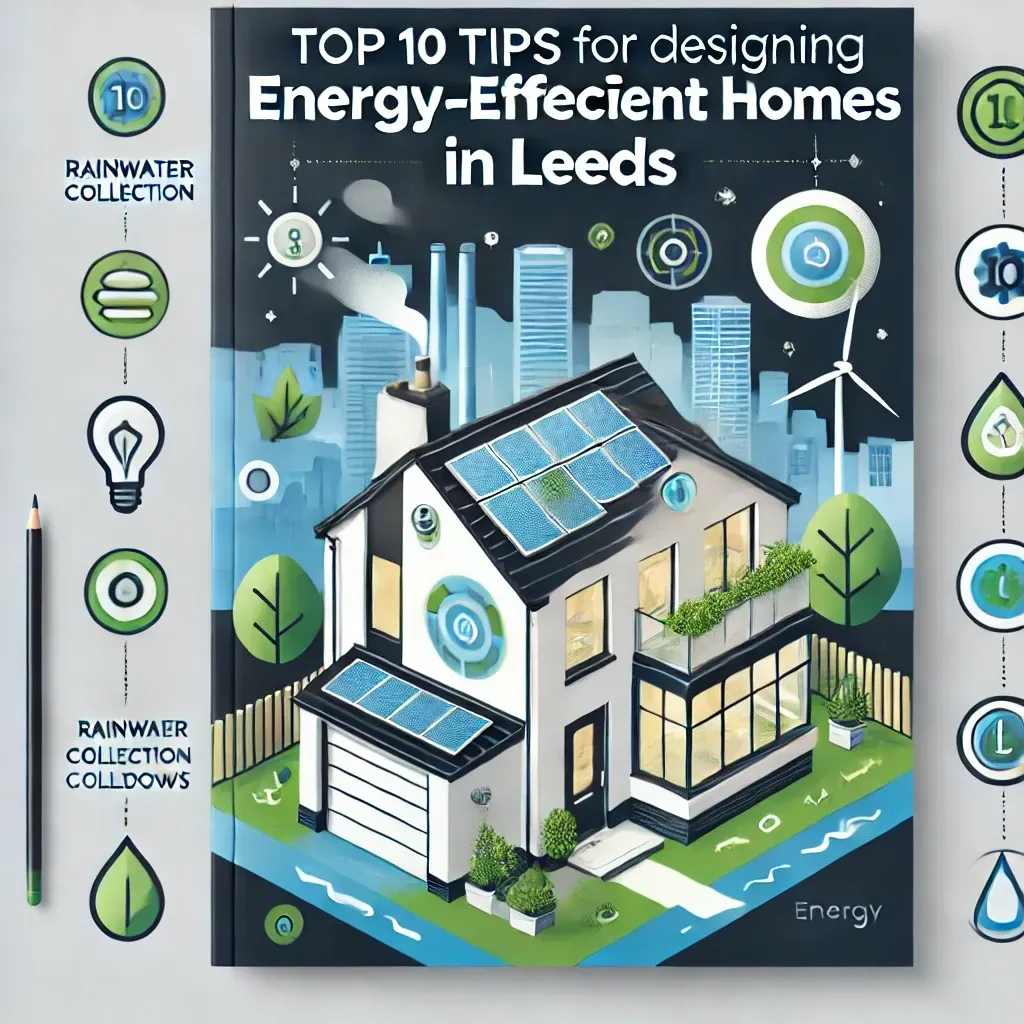Top 10 Tips for Designing Energy-Efficient Homes in Leeds
Top 10 Tips for Designing Energy-Efficient Homes in Leeds

As the demand for sustainability continues to grow, more homeowners in Leeds are looking for ways to reduce their environmental footprint while creating stylish, comfortable living spaces. Energy-efficient homes not only benefit the environment but also lower energy bills and increase property value. Designing an eco-friendly home in Leeds requires a blend of thoughtful planning, innovative design, and the latest sustainable technologies. Here are our top 10 tips for designing energy-efficient homes to help you create a sustainable and environmentally friendly space.
1. Maximise Natural Light
One of the simplest ways to reduce energy consumption in your home is to make the most of natural light. Large windows, skylights, and strategically placed openings can flood your home with daylight, reducing the need for artificial lighting. Opt for double-glazed, energy-efficient windows to keep your home warm in winter and cool in summer, minimising heat loss while providing plenty of natural light.
2. Use Sustainable Building Materials
The choice of materials plays a significant role in sustainable architecture. For an energy-efficient home in Leeds, opt for locally sourced and eco-friendly materials such as reclaimed wood, bamboo, recycled metal, and sustainable concrete. Not only do these materials reduce your home's carbon footprint, but they also provide durability and a unique aesthetic.
3. Invest in High-Quality Insulation
Proper insulation is key to maintaining a consistent indoor temperature, reducing the need for heating and cooling systems. High-quality insulation in the walls, floors, and roof helps prevent heat loss during the colder months and keeps the interior cool during summer. Consider using eco-friendly insulation materials like sheep's wool, cellulose, or recycled denim for an added sustainability boost.
4. Incorporate Solar Panels
Leeds may not always be known for its sunny weather, but solar panels are still a highly effective way to generate renewable energy. Modern solar panel technology works even on cloudy days, making it a great option for energy-efficient homes. Solar panels can significantly reduce your electricity bills and, in some cases, even allow you to sell excess energy back to the grid.
5. Choose Energy-Efficient Appliances
When designing your home, consider energy-efficient appliances that meet the highest energy performance standards. Look for appliances with the Energy Saving Trust Recommended label or those rated A+++ to ensure they consume the least amount of energy while offering top performance. From dishwashers to refrigerators, investing in energy-efficient appliances will reduce your home's energy consumption over time.
6. Utilise Passive Solar Design
Passive solar design focuses on positioning your home to make the most of natural sunlight for heating and cooling purposes. By carefully considering the orientation of your home and window placement, you can capture sunlight to warm your home in the winter while avoiding overheating in the summer. Incorporating shading elements, such as overhangs or pergolas, can also help regulate temperatures naturally.
7. Install a Smart Home System
A smart home system can optimise the energy efficiency of your home by controlling heating, lighting, and even appliances through automation. Smart thermostats, for example, allow you to monitor and adjust your home's temperature remotely, ensuring that you only use energy when necessary. In addition, smart lighting systems can automatically turn off lights when a room is empty, reducing unnecessary energy use.
8. Choose Eco-Friendly Heating and Cooling Systems
Traditional heating systems can be one of the largest energy consumers in your home. To create a more energy-efficient space, consider installing eco-friendly options like air source heat pumps, ground source heat pumps, or underfloor heating systems. These options use renewable energy sources and provide consistent, efficient heating for your home while lowering your overall energy consumption.
9. Consider Green Roofs and Living Walls
A green roof or living wall can provide excellent insulation, absorb rainwater, and improve air quality around your home. These features not only contribute to energy efficiency but also add a beautiful, natural element to your home’s design. Living walls can also act as natural temperature regulators, helping to keep interiors cool in the summer and warm in the winter.
10. Work with Sustainable Architects
Finally, to ensure your home is as energy-efficient as possible, it’s crucial to work with experienced architects who specialise in sustainable architecture. At Architecture365, we offer expert architectural services in Leeds, focusing on eco-friendly designs that incorporate the latest technologies and best practices for energy-efficient homes. From the planning stage to final construction, we can help you create a sustainable, eco-conscious home that meets your needs and contributes to a greener future.
Conclusion
Designing an energy-efficient home in Leeds requires careful planning, expert advice, and a commitment to sustainability. By incorporating these top 10 tips into your home design, you’ll reduce your environmental impact, save on energy costs, and create a comfortable, stylish living space. At Architecture365, we are passionate about helping homeowners in Leeds build sustainable, eco-friendly homes that are both functional and beautiful. If you're ready to start your energy-efficient home project, contact us today for expert guidance and support.
